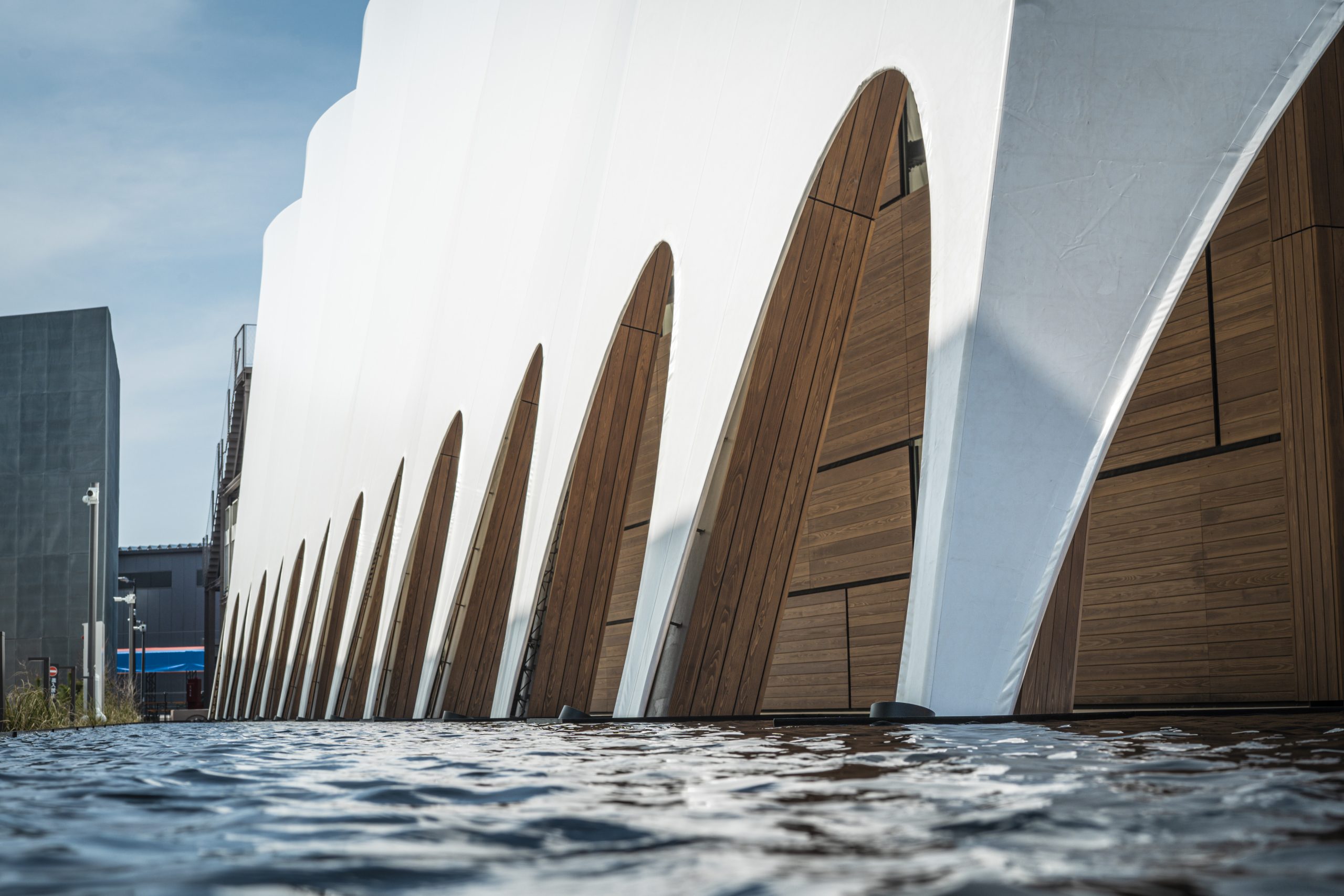The relationship between land and sea captures the essence of Qatar’s story – a narrative that cannot be told by referencing one without the other. These two elements meet at the Qatari coastline, where serene natural landscapes, vibrant cities, and enduring historical landmarks converge. Designed by Kengo Kuma, the Qatar Pavilion’s design draws inspiration from the Dhow boat, the traditional Qatari boat, symbolizing the confluence of land, sea, and shoreline in a powerful architectural expression.
The pavilion’s design seamlessly blends the craftsmanship of traditional Qatari wooden boatbuilding with the refined Japanese woodworking tradition, forming a symbolic bridge between the cultures of Qatar and Japan. The pavilion takes visitors on a rich visual journey to explore the coastline of Qatar and its profound importance to Qatar’s cultural identity, natural environment, historical legacy, and economic progress. Through this experience, visitors discover the deep-rooted connection between the Qatari people and the sea – a source of livelihood for centuries through fishing and pearling, and a continuous inspiration for our present and future vision.
Pavilion Description
Upon entering the pavilion, visitors are welcomed by verses of poetry from the founder, Sheikh Jassim bin Mohammed Al Thani, and the poet Ahmed bin Hassan Al-Muhannadi. They then embark on a symbolic sea journey, with a gradual transition of colors – from deep blue, representing the ocean depths, to turquoise for the shallow waters, culminating in golden sands that evoke the Qatari shoreline.
The coastline forms the pavilion’s central visual focus, dominating the main exhibition space, which features three large screens showcasing a blend of archival and contemporary footage that reflects Qatar’s past and present. The exhibition highlights the deep interconnection between land, sea, and coast. It is surrounded by a symbolic curtain representing Qatar’s territorial waters and their abundant natural and living resources, evoking the image of a nation encircled by the sea.
Concept notes
The pavilion’s design features a wooden structure reminiscent of traditional Qatari boats, enveloped by a large, three-dimensional white membrane inspired by the form of a sail. A spacious void separates the wooden box, finished with cedar paneling and coated with three different colors of paint to replicate the color of the century-old dhow boats, from the sail-like membrane, while a surrounding water basin gives the entire structure the impression of a ship afloat at sea.
The entrance façade is made of limestone in a hue that reflects the color of Qatar’s sandy beaches – a visual expression of the connection between land and sea. The façade is adorned with symmetrical arches inspired by Islamic architecture, presented in a modern and minimalist manner. A wooden staircase leading to the guest room on the second floor winds through a private space wrapped in delicate wooden louvers, offering a sense of warmth and intimacy.
“The pavilion was designed to express the connection between Qatar and Japan, two countries that share the same seafaring heritage. In this age of images and objects, we thought that the Expo should allow visitors to feel the air, light, and wind of a faraway place. Architecture does not need to have a form, display objects, or project images. This architecture is a tool to give people a free and comfortable place at the water’s edge of Qatar. When we walk along the waterfront promenade, feeling the wind blowing through the white membrane and wooden boxes, we become one with Qatar,” said the architects in a statement.
